These pictures will make you want to visit Pompeii, which was covered under a layer of volcanic ash thousands of years ago
Romans of the first century AD lived in Pompeii, and pretty much turned it into a vacation destination for the wealthy. The seaside city overlooked the Gulf of Naples.

As a resort for Rome's rich, elegant villas lined wide, paved streets.
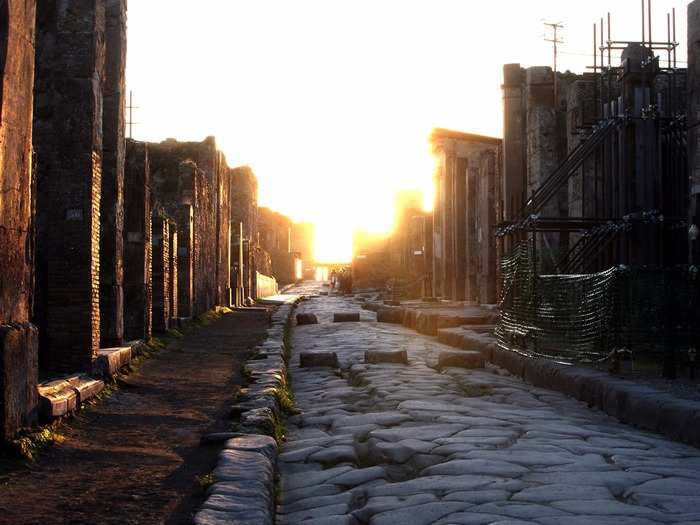
Some of these villas have been restored and are open to visitors, like the Casa del Fauno and Casa del Menandro. These extravagant homes feature courtyards and atriums, and are filled with mosaics and marble floors. ?Casa del Menandro even has a private bathhouse.
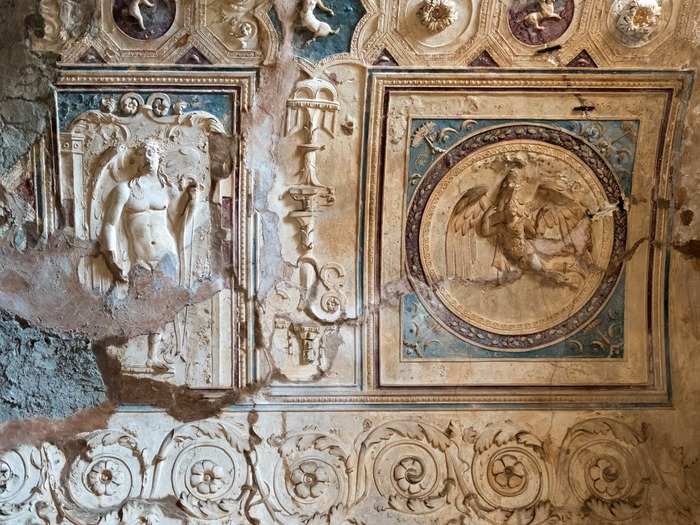
Pompeii was a bustling city with cafés, snack bars (the Thermopolium), and restaurants (Caupona Pherusa tavern), and even a 20,000-seat amphitheater. Incidentally, this amphitheater is older than the Colosseum.
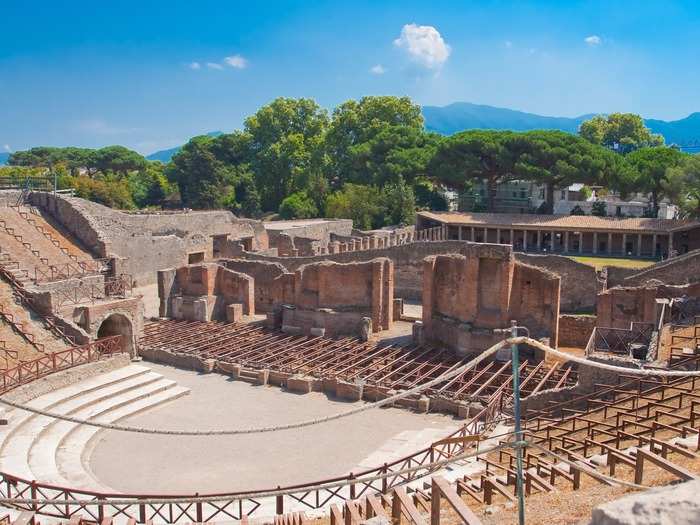
Approximately 2.5 million tourists visit the UNESCO World Heritage Site every year. Today, visitors can wander down Roman streets and check out ancient homes, former fish markets, temples, theaters, and even brothels.

Pompeii had a complex water system and port, and even two bath houses. The Terme Stabiane has beautifully stuccoed, vaulted changing rooms, and the Terme Suburbane, which is just outside Pompeii’s walls, features frescoes so graphic it scandalized the Vatican.
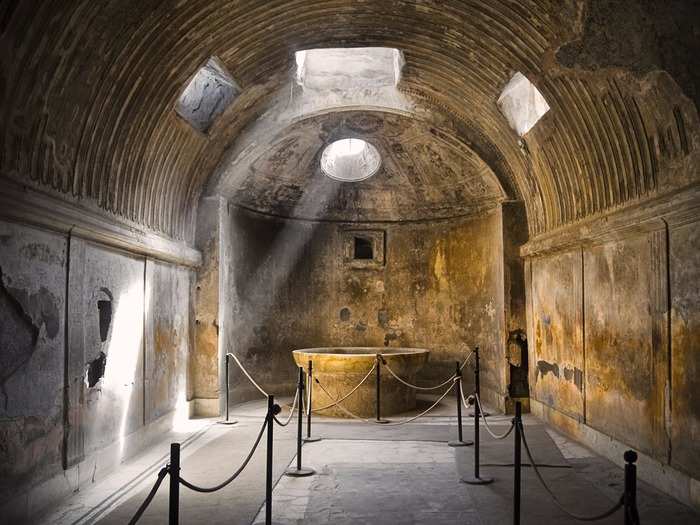
The volcanic eruption lasted 18 hours. Writer Pliny the Younger, who witnessed it from afar, wrote “I believed I was perishing with the world, and the world with me.” However, after the initial eruption some Pompeiians had time to flee.
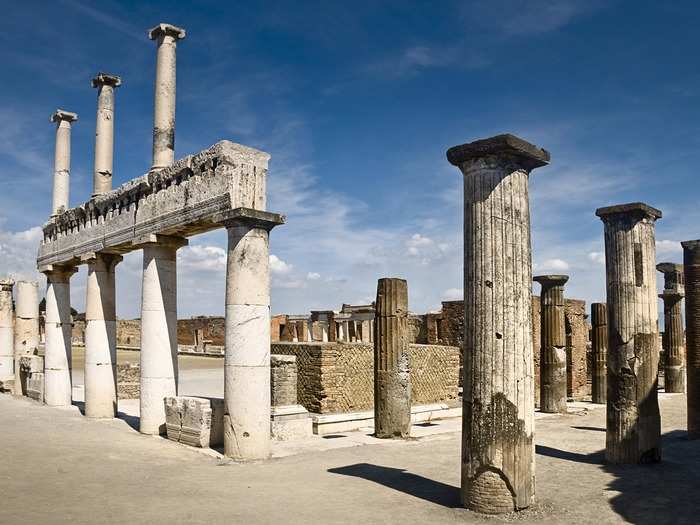
It’s estimated that 20,000 people lived in Pompeii when Vesuvius erupted — most managed to escape, probably since the volcano had been rumbling for a while.

Those who remained saw more and more ash filling the air, which made it increasingly hard to breathe. Those who didn't choke or get crushed under a collapsing structure were killed thanks to a "pyroclastic surge:" when the volcano catapulted hot poison gas and rocks into the air that killed everything in its path.
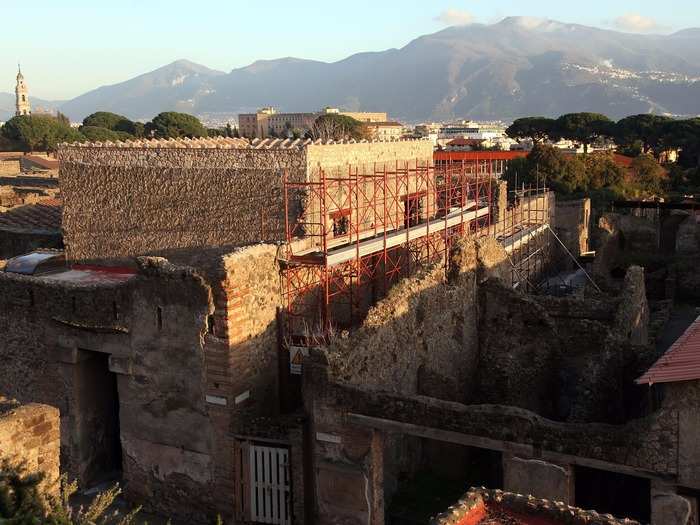
People returned to look for possessions and relatives, but Pompeii had disappeared under ash and debris, and was abandoned until its rediscovery in 1748.
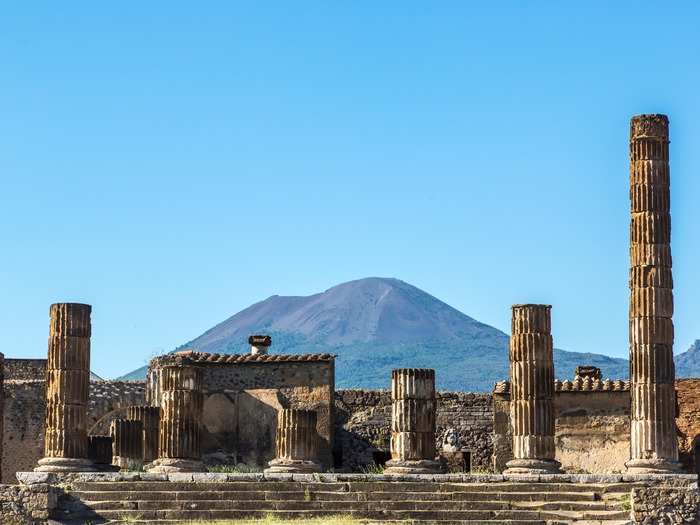
The tons of ash acted as a preservative, as it caused a lack of air and moisture that left Pompeii like an untouched shrine to Roman life.
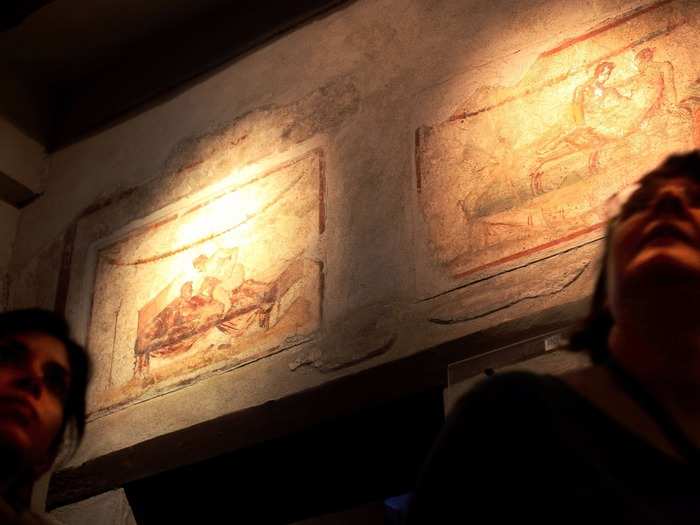
Today, Pompeii excavations have been ongoing for nearly three centuries, and around 75% of the city has been unearthed. Statues and art survived the eruption perfectly preserved.
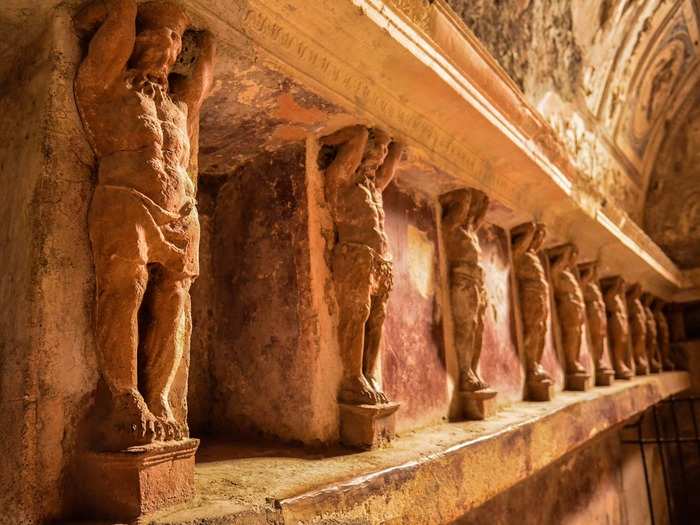
Excavators found that ash-covered skeletons, which had detailed clothing, positioning, and even facial features. Morbidly, many of them were left where they were found — hiding under staircases, crouching in corners, holding on to each other.
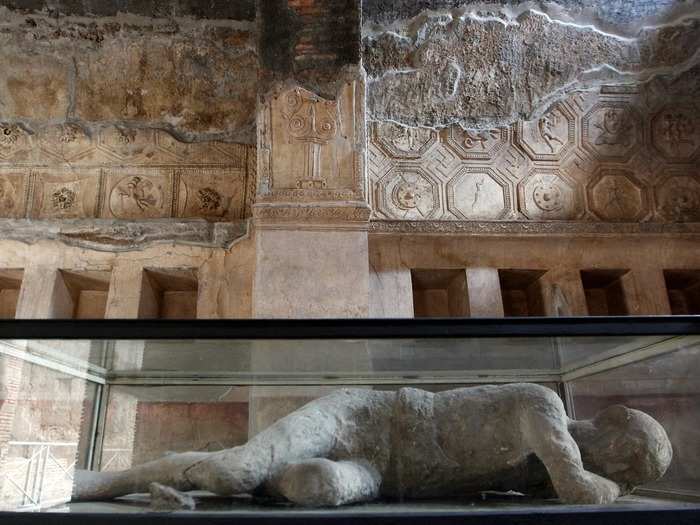
Even everyday household items were uncovered, most famously some loaves of bread. This is the The Granai del Foro, which stores the many amphorae and body casts that were made in the late 19th century.

What makes Pompeii an incredible place to visit is the fact that it provides such a graphic slice of ancient Roman life, thrusting visitors into life 2,000 years ago: from fancy restaurants to brothels, swanky gyms to slogans painted on walls by Roman politicians running for office.
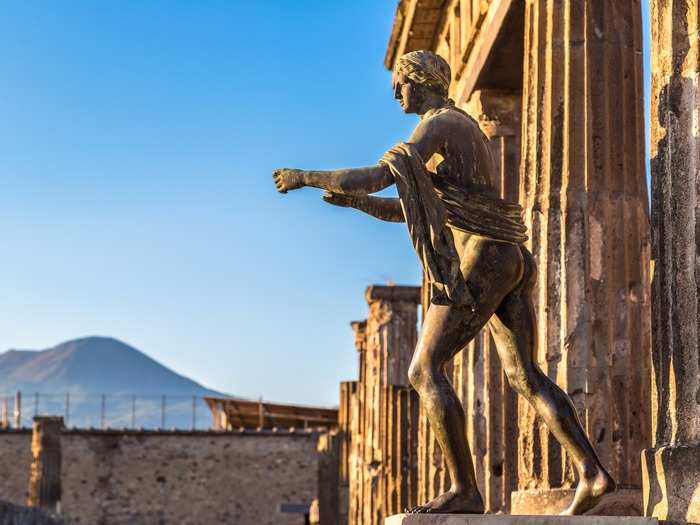
While Vesuvius hasn't erupted since 1944, it is still considered one of the most dangerous volcanoes in the world, and experts think that another huge eruption could occur any day.
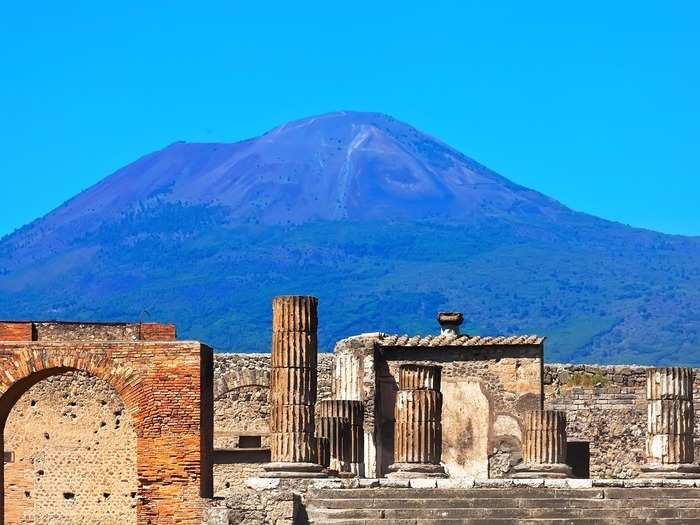
That would be a disaster, as almost three million people live within 20 miles of the volcano today.
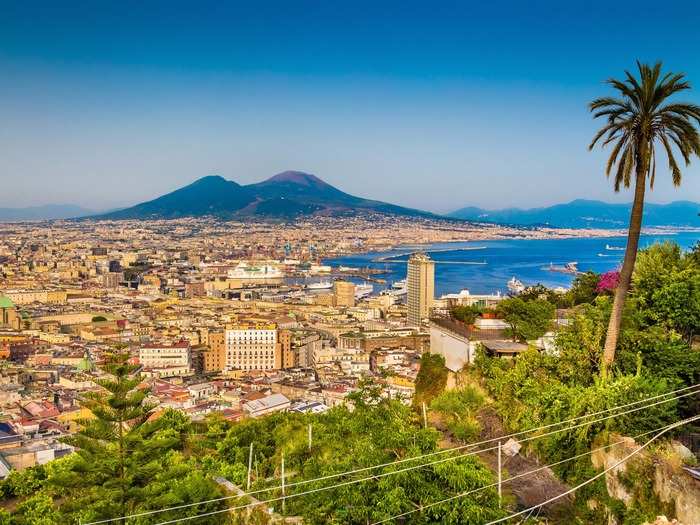
Popular Right Now
Popular Keywords
Advertisement